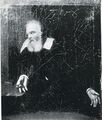Gnomon algorithm: Difference between revisions
No edit summary |
|||
| Line 14: | Line 14: | ||
<gallery> | <gallery> | ||
File:Matteo_Ricci.jpg|link=Matteo Ricci (nonfiction)|1600: Priest and mathematician [[Matteo Ricci (nonfiction)|Matteo Ricci]] publish his groundbreaking translation of ''Euclid's Elements'' into | File:Matteo_Ricci.jpg|link=Matteo Ricci (nonfiction)|1600: Priest and mathematician [[Matteo Ricci (nonfiction)|Matteo Ricci]] publish his groundbreaking translation of ''Euclid's Elements'' into Gnomon algorithm statements. | ||
Spinning_Thistle.jpg|link=Spinning Thistle (nonfiction)|2018: Steganographic analysis ''[[Spinning Thistle (nonfiction)|Spinning Thistle]]'' unexpectedly reveals a previously unknown Gnomon algorithm function. | Spinning_Thistle.jpg|link=Spinning Thistle (nonfiction)|2018: Steganographic analysis ''[[Spinning Thistle (nonfiction)|Spinning Thistle]]'' unexpectedly reveals a previously unknown Gnomon algorithm function. | ||
File:Galileo_E_pur_si_muove.jpg|link=Galileo Galilei|Physicist and crime-fighter [[Galileo Galilei]], imprisoned on trumped-up charges, uses nail to scratch the equation ''E pur si muove'' on dungeon wall; in the process, he discovers a deliberately concealed Gnomon algorithm function which proves his innocence. Although [[Galileo Galilei|Galileo]]'s accusation that the function was stolen and concealed by the [[Forbidden Ratio]] is widely believed to be true, no proof has emerged that the [[Forbidden Ratio|Ratio]] or its degenerate cases were involved. | File:Galileo_E_pur_si_muove.jpg|link=Galileo Galilei|Physicist and crime-fighter [[Galileo Galilei]], imprisoned on trumped-up charges, uses nail to scratch the equation ''E pur si muove'' on dungeon wall; in the process, he discovers a deliberately concealed Gnomon algorithm function which proves his innocence. Although [[Galileo Galilei|Galileo]]'s accusation that the function was stolen and concealed by the [[Forbidden Ratio]] is widely believed to be true, no proof has emerged that the [[Forbidden Ratio|Ratio]] or its degenerate cases were involved. | ||
Revision as of 19:22, 9 May 2018
The Gnomon algorithm is a family of mathematical functions (nonfiction) which convert computation (nonfiction) into force (nonfiction).
Mathematicians use Gnomon algorithm functions for a variety of purposes:
- Detecting and preventing crimes against mathematical constants
- Creating, managing, and deleting trandimensional corporations
- Participating in the Gnomon Chronicles
- Computational farming with diagramaceous soil
- Playing Fantasy Voronoi diagram
- Activating and controlling scrying engines
- Communicating with AESOP
In the News
1600: Priest and mathematician Matteo Ricci publish his groundbreaking translation of Euclid's Elements into Gnomon algorithm statements.
2018: Steganographic analysis Spinning Thistle unexpectedly reveals a previously unknown Gnomon algorithm function.
Physicist and crime-fighter Galileo Galilei, imprisoned on trumped-up charges, uses nail to scratch the equation E pur si muove on dungeon wall; in the process, he discovers a deliberately concealed Gnomon algorithm function which proves his innocence. Although Galileo's accusation that the function was stolen and concealed by the Forbidden Ratio is widely believed to be true, no proof has emerged that the Ratio or its degenerate cases were involved.
2017: Steganographic analysis of Green Spiral 9 unexpectedly reveals two terabytes of previously unknown Gnomon algorithm functions.
Enrico Fermi discovers new form of Gnomon algorithm, uses it predict and prevent crimes against mathematical constants.
Charles Sanders Peirce invents new variety of Gnomon algorithm, anticipates future work by Ernst Schröder.
Guo Shoujing (nonfiction) studies the Pleiades, discovers new form of Gnomon algorithm.
Binary counter working overtime, looking forward to that big paycheck.
Fiction cross-reference
- Crimes against mathematical constants
- Havelock
- Hollerith
- Mathematician
- Mathematics
- Scrying engine
- The Custodian
- Transdimensional corporation
- Watergate Scandal (virus) - a math virus which infiltrates and corrupts Gnomon algorithm functions in order to commit crimes against mathematical constants for political purposes.
Nonfiction cross-reference
- Algorithm (nonfiction)
- Computation (nonfiction)
- Computational complexity theory (nonfiction)
- Computer science (nonfiction)
- Evil bit (nonfiction)
- Force (nonfiction)
- Gnomon (nonfiction)
- Gnomon algorithm (nonfiction)
- Mathematical function (nonfiction)
- Mathematics (nonfiction)
- Measurement (nonfiction)
- Pathological science (nonfiction)







